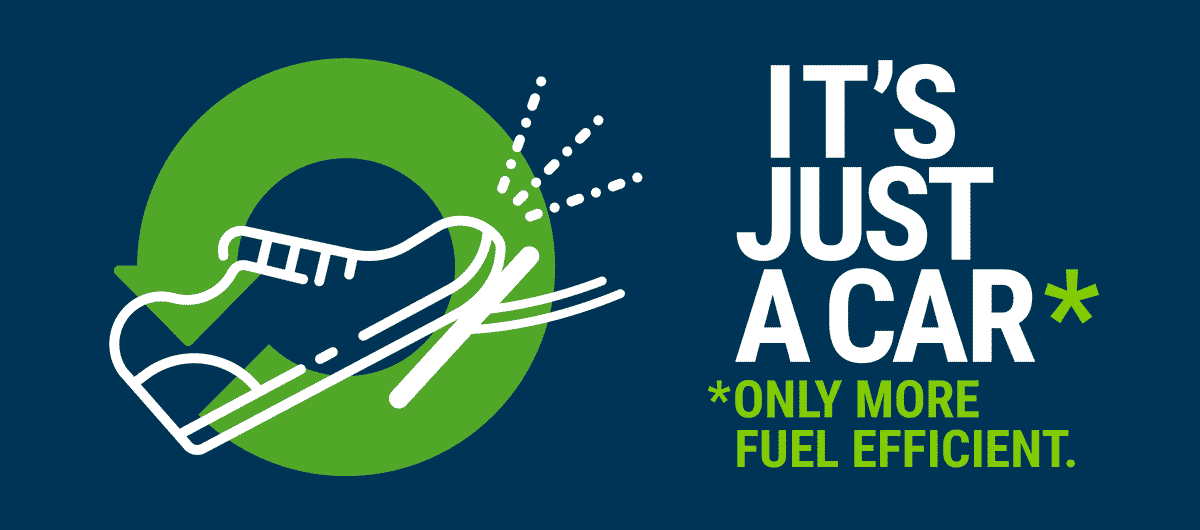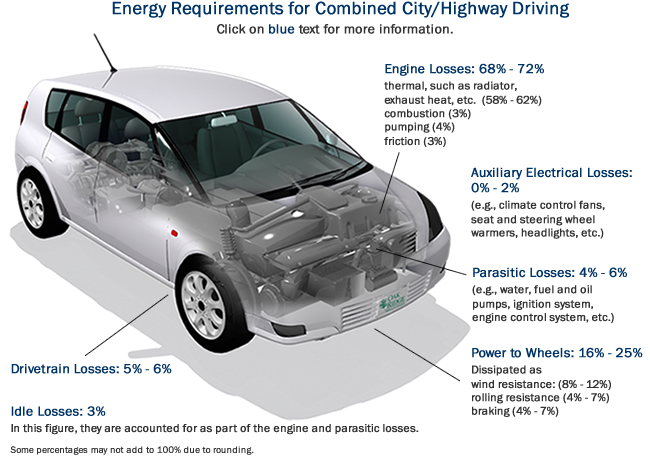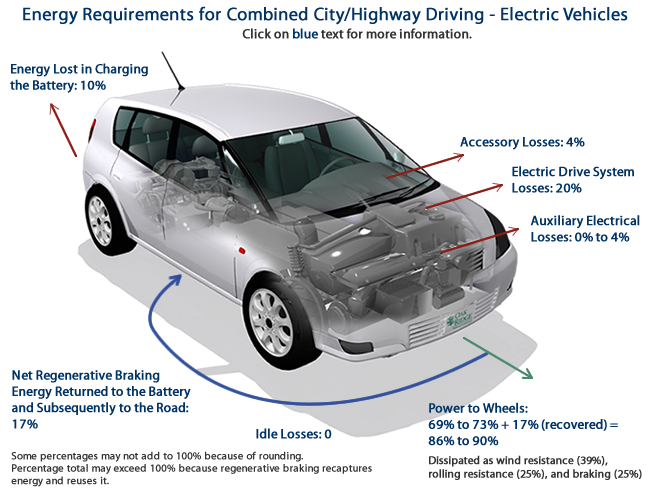
EV SCHOOL
|November 2020 NEWSLETTER
Efficiency: How EVs Use Fuel Better
Each issue, EV School dives into a different benefit of driving electric, designed to give you the tools to be an advocate in your community. After all – It’s Just a Car, Only Better.
EV SCHOOL
Did you know that only about 12% to 30% of the energy from the gasoline pumped into a conventional vehicle is actually used? The rest of that energy is mostly lost to the inefficiencies of an internal combustion engine.
On the other hand, electric vehicles (EVs) can put to use 60% to 73% of their fuel source (electricity, that is). However, if the energy from regenerative braking is counted (or rather, recounted, because it is being reused), then EVs can be more than 77% efficient.
Kinetic Energy 101
Kinetic energy is the energy of motion. Different forms of energy can be transferred from one form to another. A car engine converts chemical energy (stored in fuel sources such as diesel, gasoline, or electricity) into mechanical energy in the engine and wheels, which accelerates the car and therefore increases its kinetic energy.
It is impossible for any machine to be 100% efficient because some energy is always lost to heat generation. And due to the physical limitations of cars, energy will also inevitably be lost to wind resistance and rolling resistance from tires, regardless of fuel source. But in general, the higher the efficiency, the less energy you need to power your car.
Where the Energy Goes in a Gas Vehicle
Most of the 64% to 75% energy loss in a gasoline powered vehicle is lost in the engine, primarily as heat, such as the radiator and exhaust. Much of this can be attributed to the fact that an internal combustion engine has to convert the potential chemical energy in gasoline into thermal energy, which moves the pistons, transferring into mechanical energy.
Smaller amounts of energy are also lost through engine friction, pumping air into and out of the engine, and combustion efficiency. Another 4% to 6% of energy is used by pumps, ignition systems, and engine control systems.

Where the Energy Goes in an Electric Vehicle
One reason why an all-electric vehicle is so efficient is because it doesn’t have the thermal losses of a combustion engine. Here are the areas that use energy in an EV: the electrical drive system uses up about 20% of its energy, accessories use about 4%, and there is an average of 10% energy lost in charging the battery (depending on outside temperature, the charge level of the battery, and the speed of the charge). That leaves 60% to 73% of its energy that is used as power to the wheels.
Another game-changer here is regenerative braking. By recapturing and reusing an average of 17% of your electricity, energy that normally would be lost in braking is transferred back to rubber hitting the road.

All in all, EV efficiency is four-times better than the average gas-powered vehicle and two-times better than the most efficient hybrid. So, by driving an electric vehicle, you’re not only reducing demand for oil specifically, but you’re consuming less overall energy to travel the same number of miles.
For more information on how Gasoline, Hybrid, and All-Electric cars use their energy, check out the U.S. Department of Energy’s clickable infographics at fueleconomy.gov.
